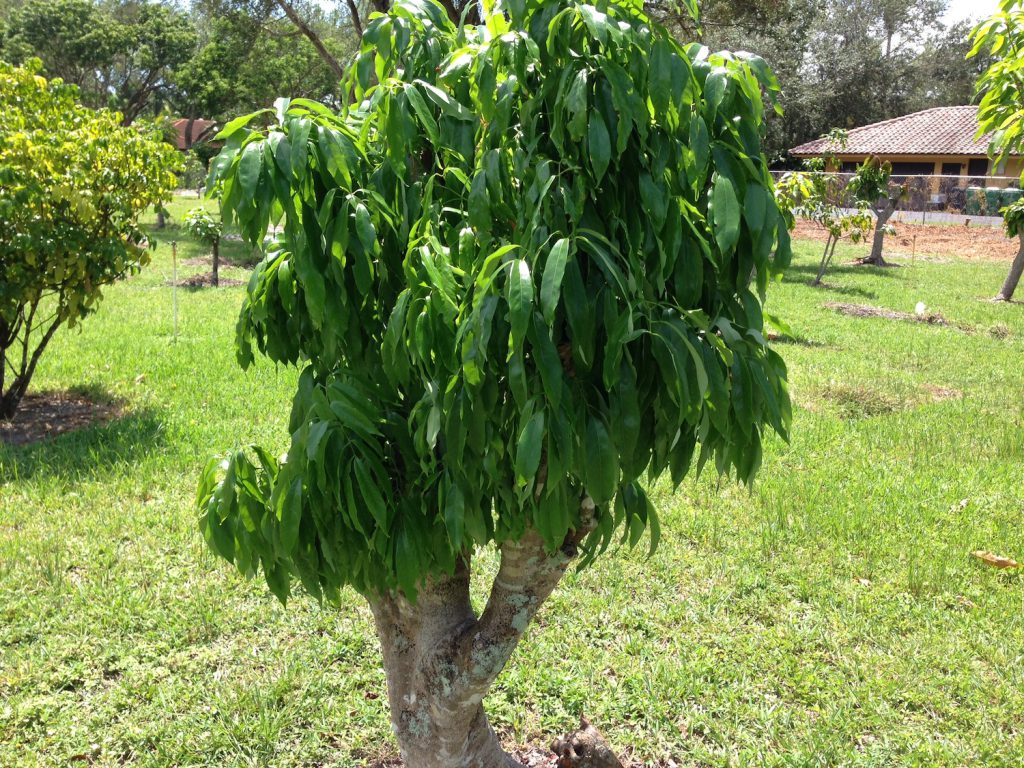There are a number of controllable factors that combine to create a tree healthy enough to fruit. A healthy tree must have a strong root system, adequate light, proper pruning, proper nutrition, the right age, proper pollination, no mechanical damage, been planted properly, and adequate irrigation.
The question, “Why won’t my tree fruit?” is one that can be answered by narrowing down the cause of the lack of fruit through a series of questions.
Is the tree getting full sun?
Producing fruit takes a lot of energy and trees create their energy by using the sun through photosynthesis. Without enough sunlight, a tree will not bloom. Without bloom, there is not fruit. If your tree is being shaded by your house or another taller tree, it will have trouble producing fruit. Proper spacing and proper pruning helps to control the light.
Does the tree look healthy?
If the tree is green and the leaves are all fully formed, it is most likely not dealing with any issues that would stop it from blooming and setting fruit. If the tree has a trunk caliper of five inches or less, you can gently see if you can move the trunk. If the trunk of the tree moves along with its roots, that is a sign that the tree has a weak root system that may have been caused by too much water or a girdled root system before the tree was planted. Weak root systems will often cause trees to have a difficult time obtaining nutrients. If the trunk moves, but the roots do not, then the root system is most likely strong.
When was the last time the tree was pruned?
A fruit tree that was severely pruned in the last year will often result in no flowering and fruiting for at least one year and may not produce for up to three years. A severe pruning causes the tree to abandon fruiting and put all of its energy into restoring the missing leaf canopy. A tree that was not pruned severely, but was pruned too late in the season, may also negatively affect flowering and fruiting. If a tree was pruned shortly before it was getting ready to bloom, it is possible that branches that were set to bloom were removed and will be replaced by new vegetative growth rather than bloom.

What is the irrigation schedule for your tree?
If a tree is being watered too often, that can also cause the tree not to bloom or set fruit. Too much water will either suffocate the roots and cause root rot, or it may spur the tree to grow vegetatively rather than bloom.
What is your fertilizer schedule?
If the tree is getting too much or too little of the nutrients it needs, this can also disrupt flowering and fruiting. Too much nitrogen will cause a tree to grow vegetatively and the tree may not be able to settle down to get ready to bloom. If the tree is not getting the elements it needs, it may be too weak to bloom. If the overall color of the tree is good, then the tree is most likely getting all it needs in the way of nutrients.
How old is the tree?
This question is designed to find out a number of things. If the tree is older than three years, it should have at least bloomed by now, unless the tree was grown from seed. Most fruit trees are grafted meaning they have an already mature portion of a known cultivar, for instance a ‘Haden’ mango, grafted onto a healthy seedling. The graft accomplishes two things: one, you know the exact type of fruit you will get as this is basically a cloning process, and two the tree skips over having to go through all of the stages of maturity and is instantly sexually mature. A tree planted from seed has to be: a baby mango, a toddler mango, a texting mango, an Instagram mango, a Tik Tok mango, a college mango, a mature mango, and then the tree is finally old enough to fruit. Therefore, it can sometimes take up to 15 years for a tree to become mature.
What do you see when you look at the base of the trunk?
If you see mechanical damage from multiple string-trimmer hits or if the tree is planted too deep, these are also factors that will contribute to the tree not being healthy enough to bloom and set fruit.
Is the tree inside of a patio or a screen?
Pollinators cannot find your tree if it is screened off. A patio grown mango in a container will never be pollinated if it is inside of a screen. For some tropical fruit like passion fruit and dragon fruit, pollinators are scarce and hand pollination is best.
What species is your tree?
A few fruit trees are either male or female. If you get a male, you will never get fruit. Grafted trees are best to ensure the proper sex. Black sapote, Spanish lime, papaya (can also be both male and female), and Mammea americana are a few trees that can be either male or female.
After asking all of the above questions, find which category the tree is deficient in and correct the problem. A tree planted from seed, a tree not getting enough sun, or a tree that was pruned too hard are the three top reasons why a tree is not fruiting.
Source: UF/IFAS Pest Alert
Note: All images and contents are the property of UF/IFAS.



